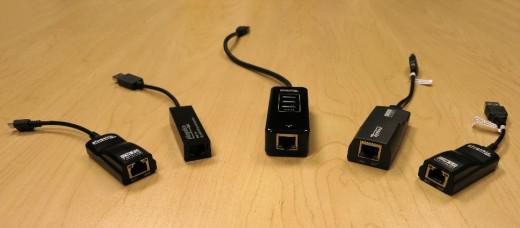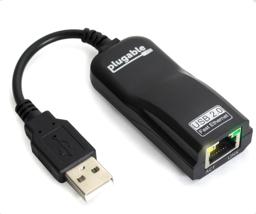You’re a consultant, and you stride into a new client’s office with your laptop, only to discover they’ve disabled WiFi for security reasons.
You pull out your Windows tablet in a hotel room, but the only internet available is coming through a wire on the desk.
You’re a gamer and you’re tired of watching helplessly as your frozen character dies of WiFi-induced lag.
You plug your computer into your brand new Gigabit fiber optic connection, and it’s no faster than before.
A USB to Ethernet adapter can be the answer in each of these scenarios. All of them can add an Ethernet port to a supported computer that lacks one. Some offer speeds far faster than a typical wireless connection or an older network card. A wired connection is also more stable, more reliable, and more secure than a wireless connection.
Plugable offers six USB-Ethernet adapters to accommodate your needs, including the USB2-E100, USB2-E1000, and USB3-E1000. There is also the USB3-HUB3ME that combines a USB 3.0 four-port hub, the USBC-E1000 which is the same as the USB3-E1000 but with a USB-C connector, and the USB2-OTGE100, which is electrically identical to the USB2-E100, but features a micro-USB connector especially suited for tablets and smartphones that don’t have a standard full-size USB port.
Which one is right for you? Which will work with your device? How can you get the highest speeds without wasting money on unneeded capacity or buying something that doesn’t work with your computer? To make a good decision, you can think about the 3 C’s: Compatibility, Capacity, and Cost.








Loading Comments